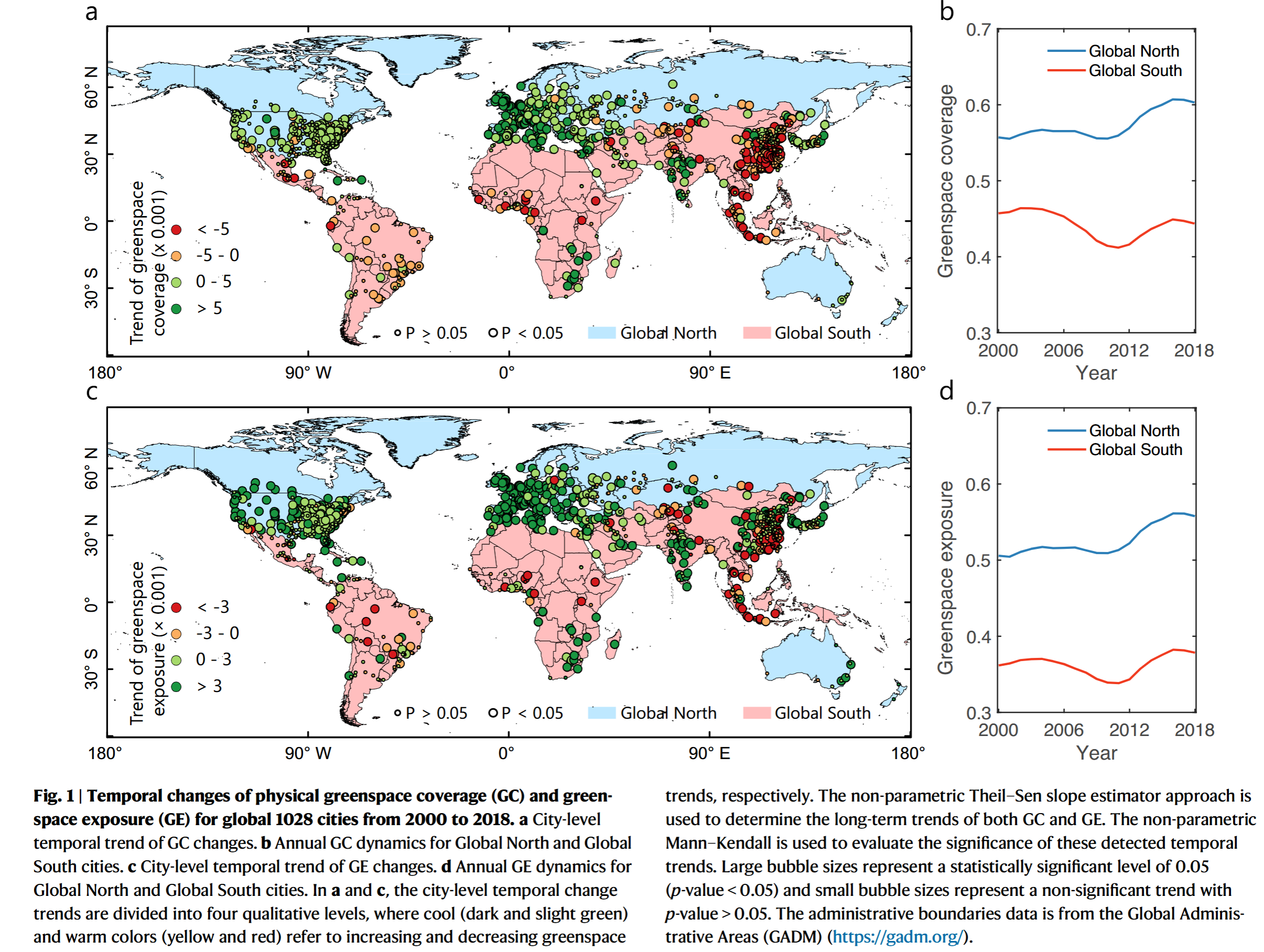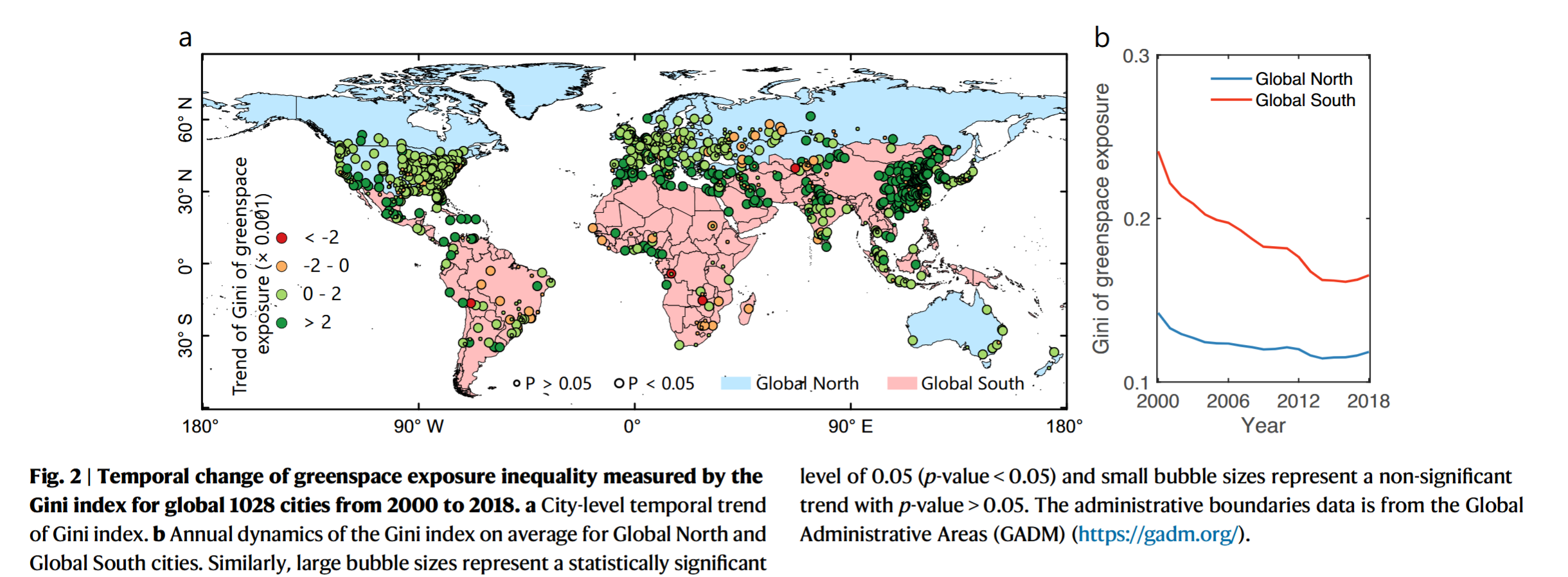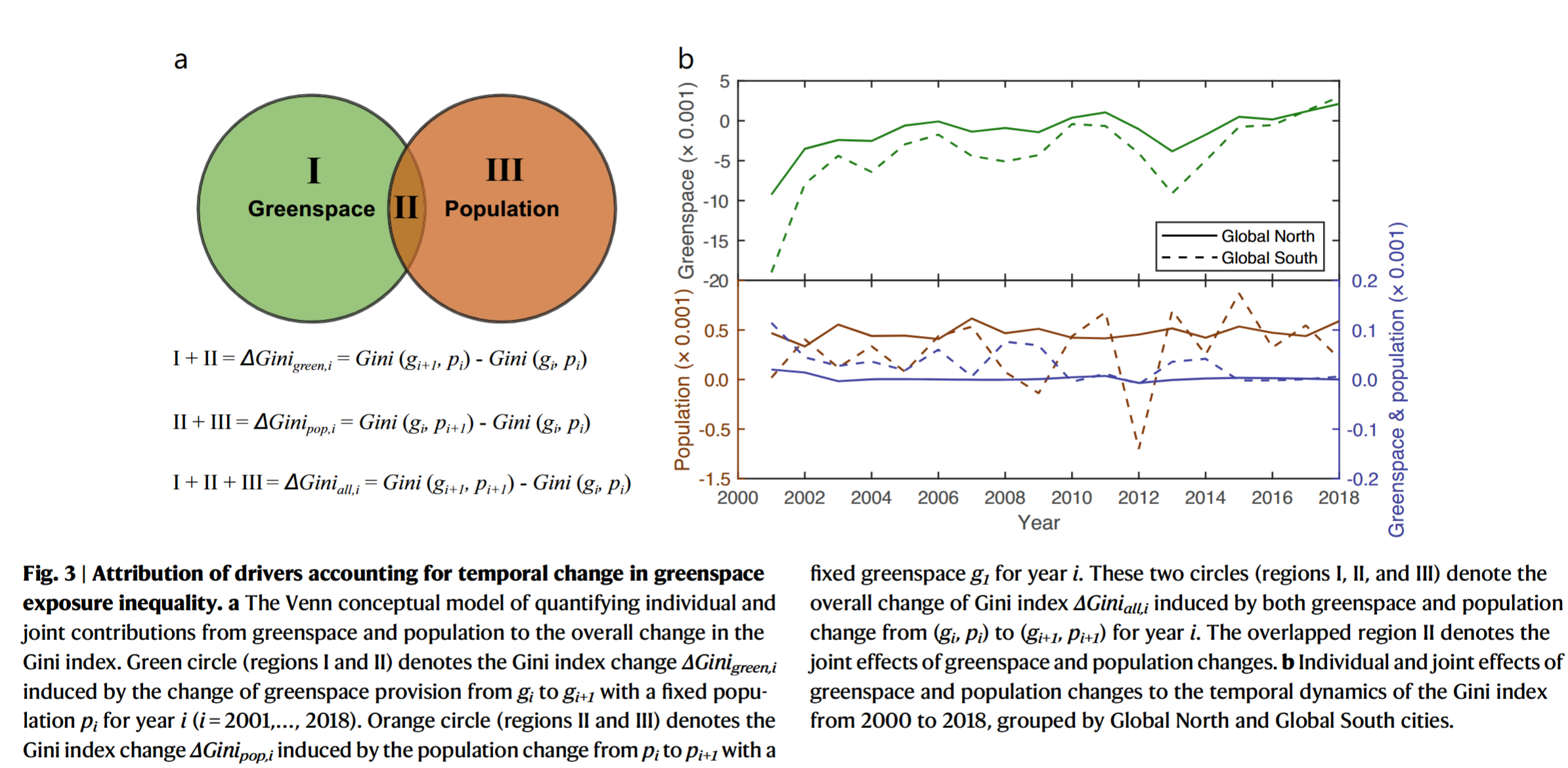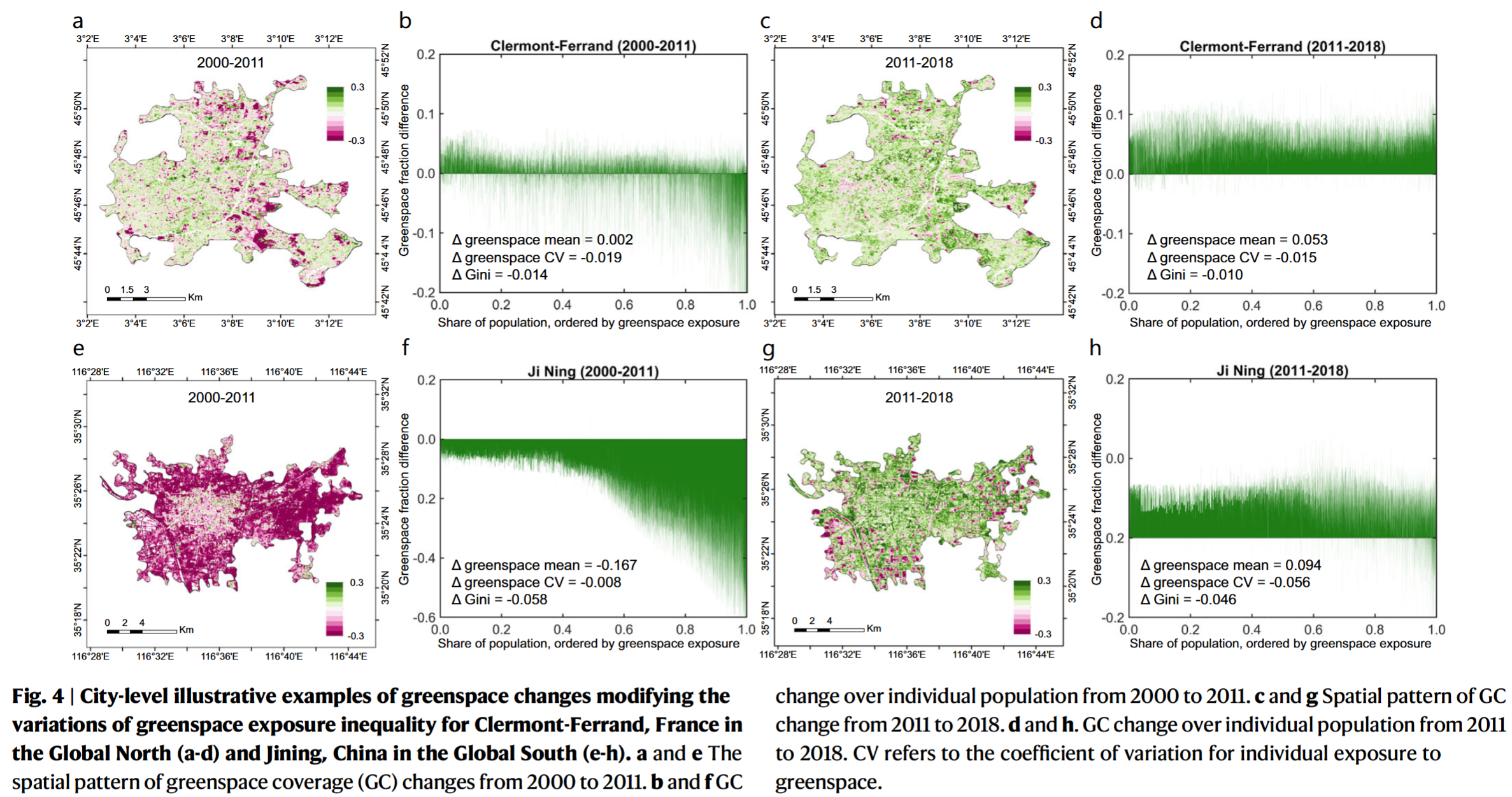Objective:
- Generate a global urban greenspace dataset for 1028 large cities
Case:
Methodology:
- Population-weighted exposure
- Gini
Data Source
- Global urban boundaries
- Greenspace: Landsat
- WorldPop
- NDVI
Findings:
- Global north cities show a prominently increasing trend in greenspace coverage, including EU, North American, Russia, Austrilia and a few cities of East Asia.

- Global south cities have a decreasing trend

- Human exposure to greenspace shows contrasting temporal change trends between global north and global south cities

- Greenspace exposure inequality has dominantly promoted the improvement


Coding Reference:





